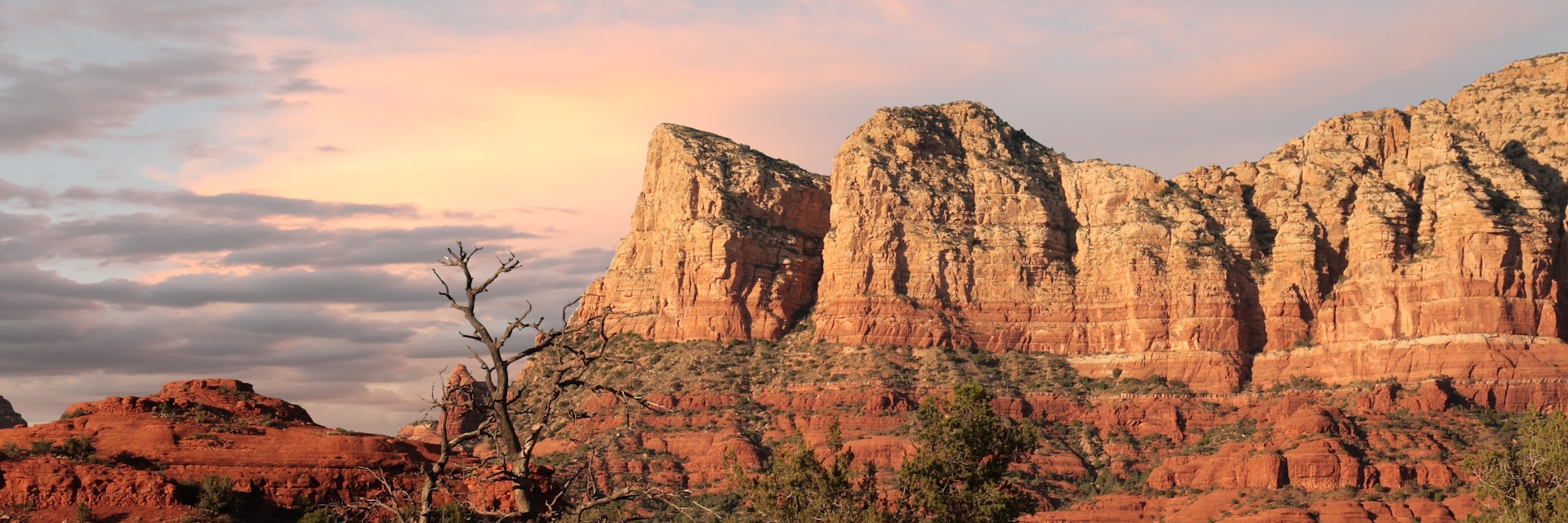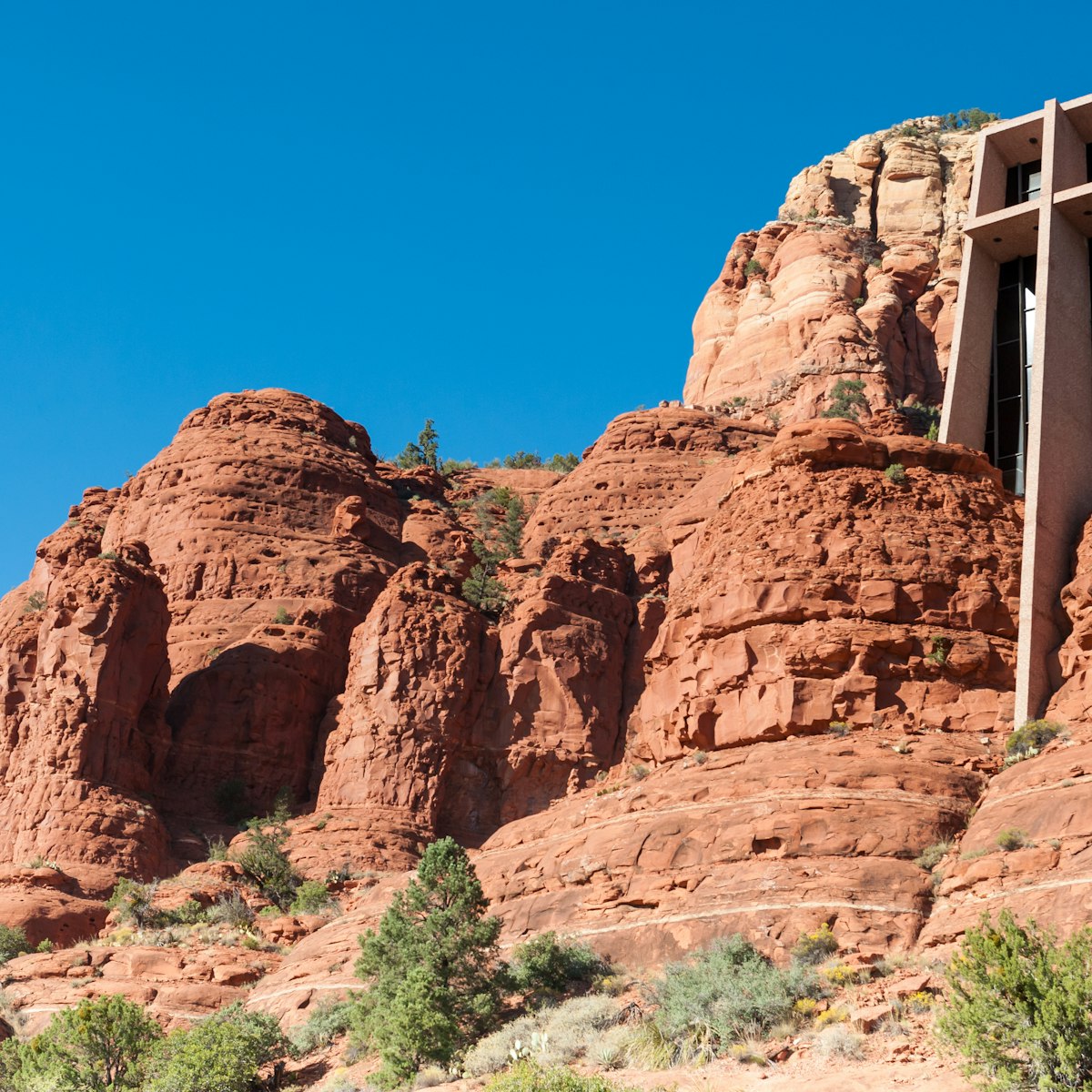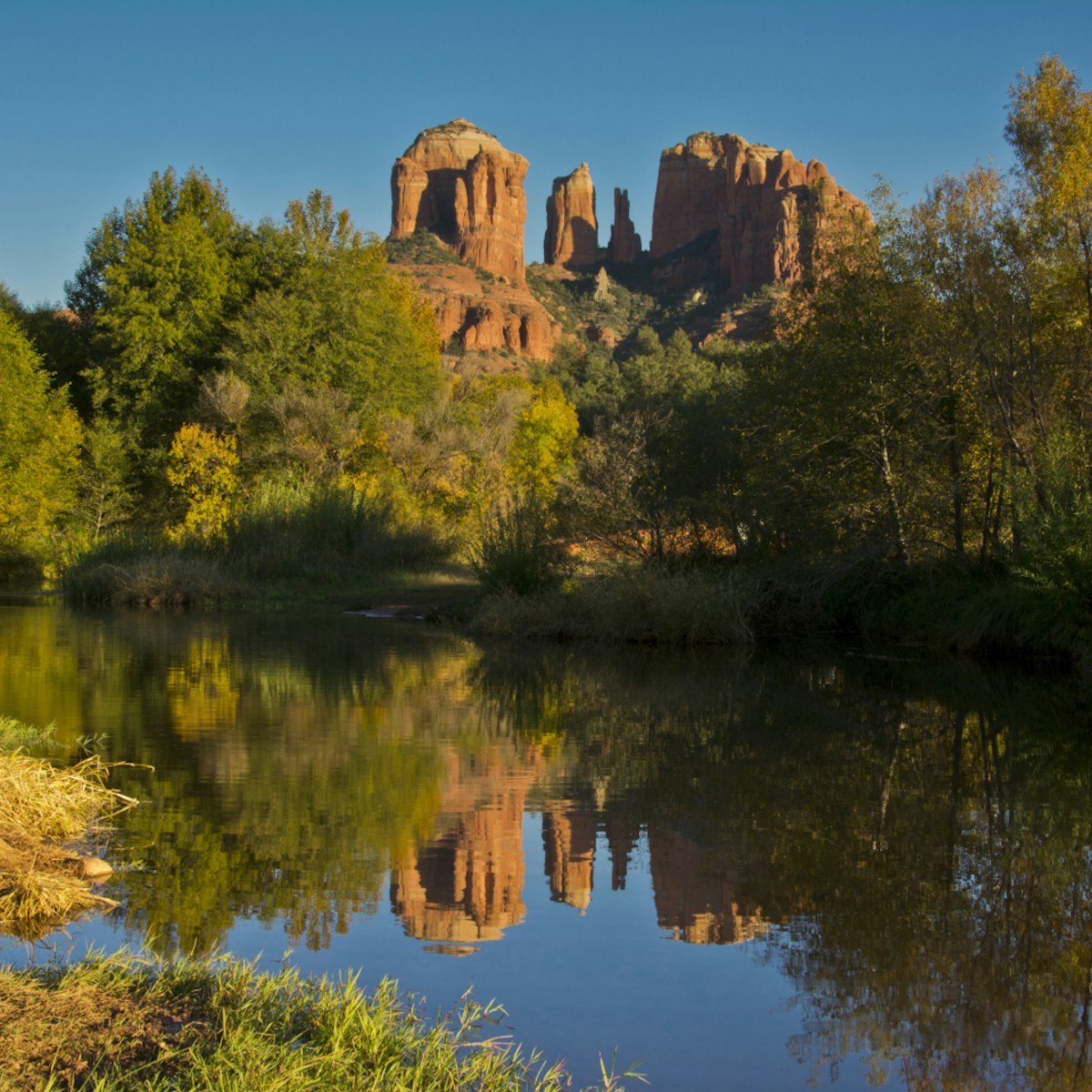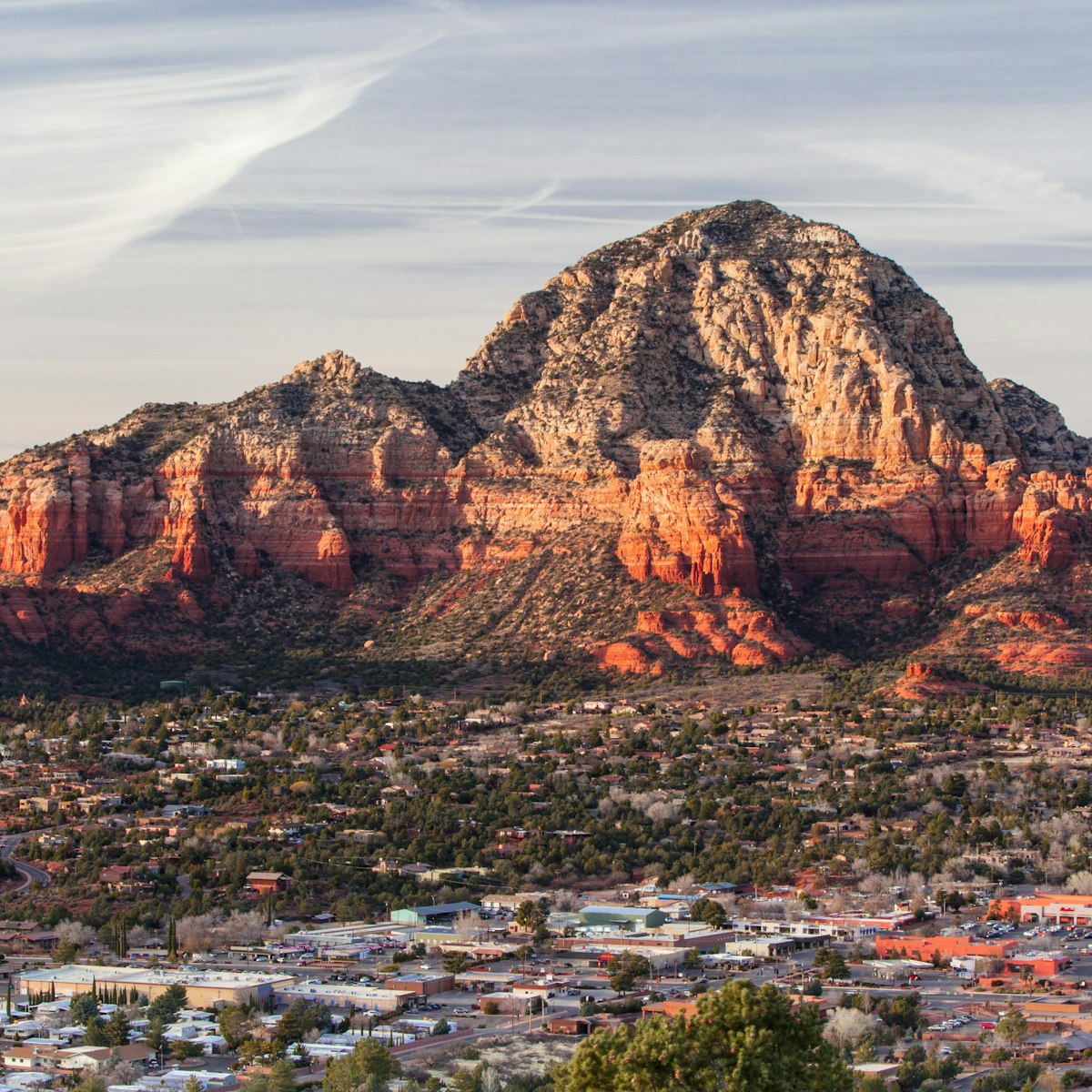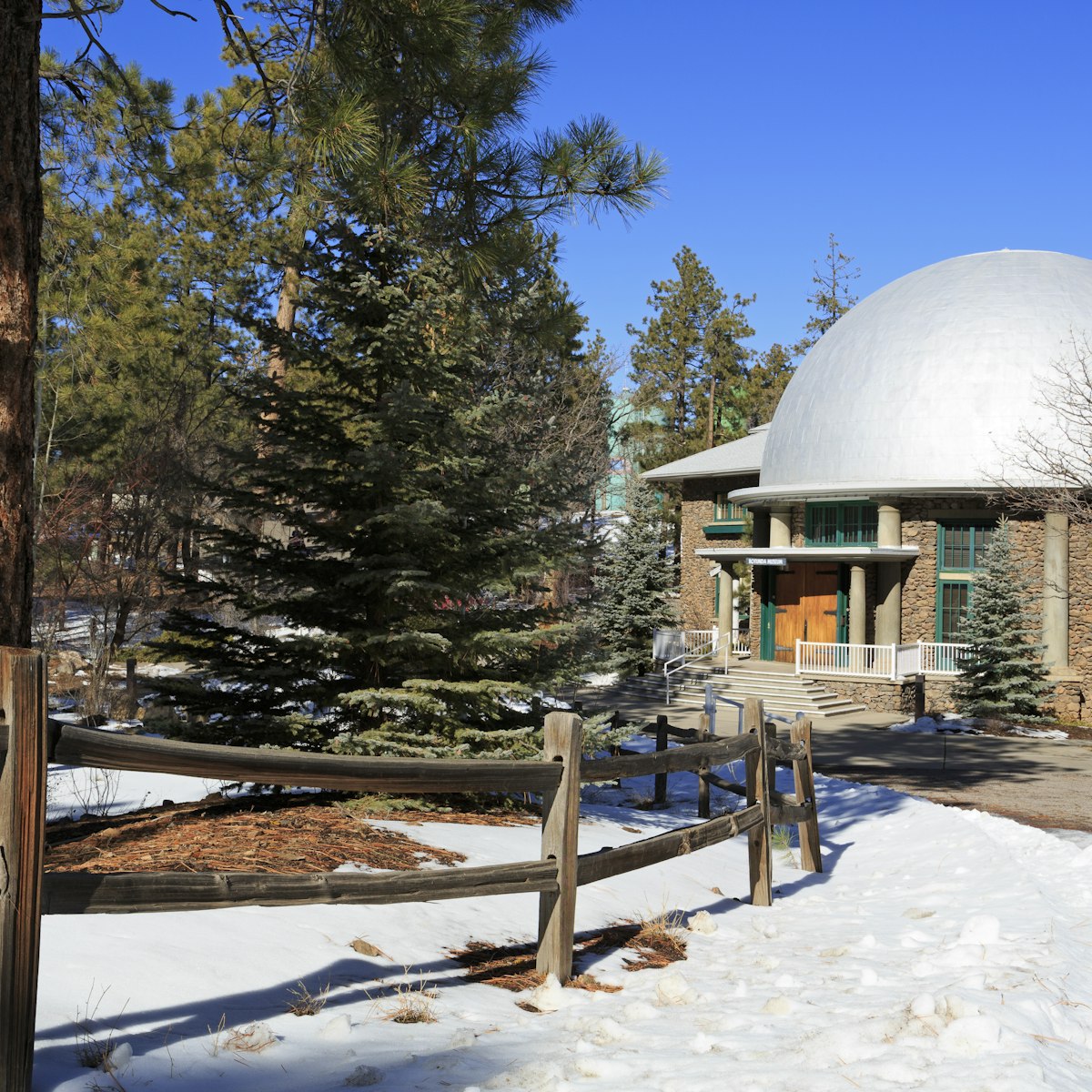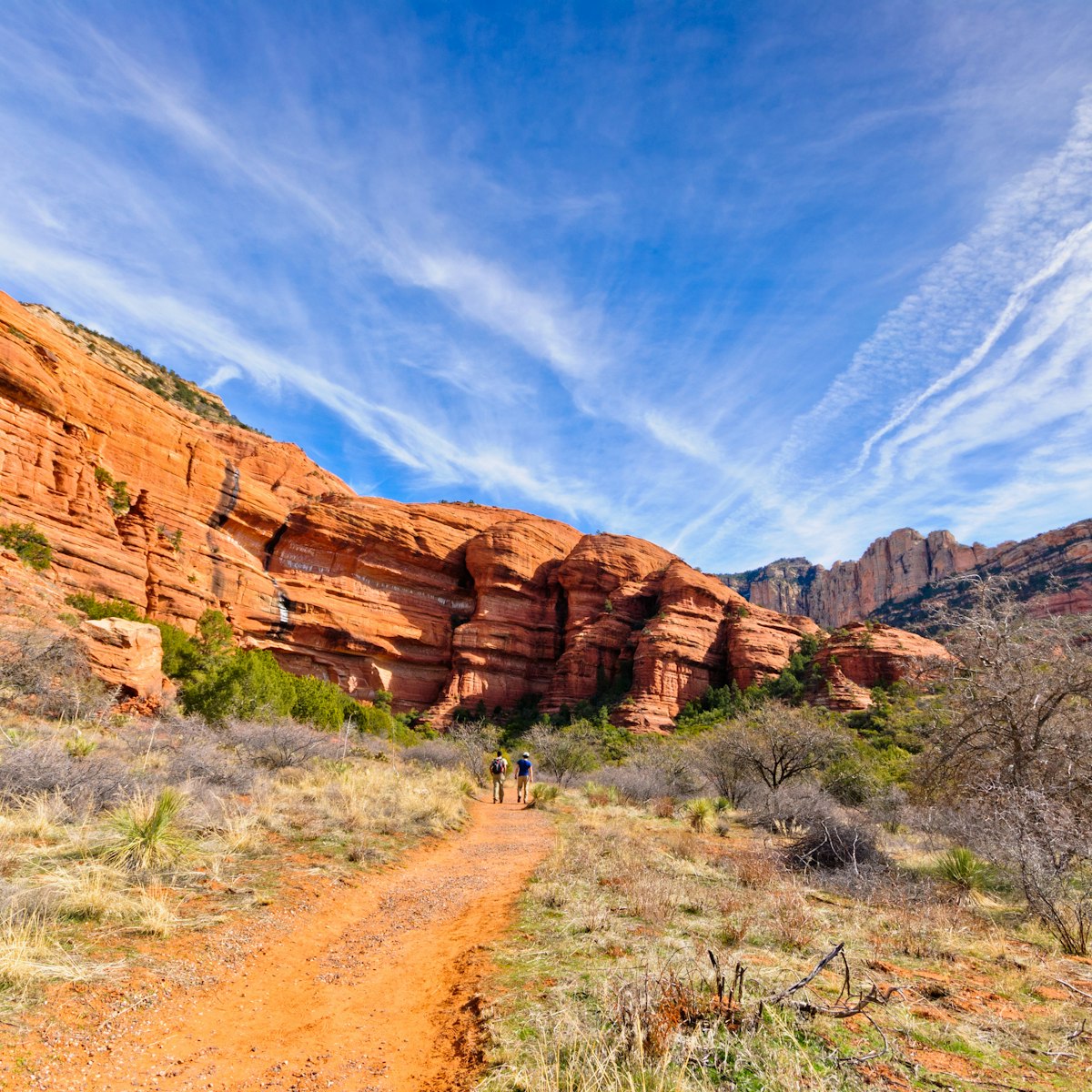Long before Sedona became a destination, only a handful of enterprising people had settled in this geological wonderland. The desert city sits at 4350ft in Central Arizona’s Verde Valley, an area shaped by volcanic activity and erosion, which ultimately carved Oak Creek Canyon and created the oxidized red rocks for which Sedona is celebrated. Located nine miles south of downtown, the 286-acre Red Rock State Park now protects this important landscape.
The park’s mission is to educate visitors about the area’s ecosystem as they explore the desert and riparian areas surrounding Oak Creek. Shortly before the establishment of Red Rock State Park in 1991, this pristine piece of nature was at risk of being lost to developers and even a religious sect. Today, the park is a microcosm of this distinctive habitat, with some strange history thrown into the mix.
Ron Pettitt/ Getty Images
History
From the 1800s to the 1930s, five homesteads had been set up in the area that would later become Red Rock State Park. The settlers ranched, farmed and planted fruit orchards. In 1941, newlyweds Jack Frye and Helen Varner Vanderbilt Frye purchased all five homesteads, along with a swath of land that became the 700-acre Smoke Trail Ranch. The wealthy couple planned to turn the property into a getaway retreat.
They constructed an architectural oddity that still stands in the park: House of Apache Fires. Pueblo-like in style, Jack Frye and the Yavapai-Apache people built the house from red rock and timber sourced nearby. Construction started in 1947 and spanned three years. Stretched over two levels, the 3000 sq ft house featured views of Cathedral Rock, three fireplaces (one on the rooftop), a commercial gas range and, in the main bedroom, a bed suspended from the ceiling.
Helen Frye’s inspiration for the home’s name came from the fires the Indigenous people lit along Oak Creek, where they camped at night. After the idealistic couple’s relationship faltered, construction stopped. Helen became sole owner of Smoke Trail Ranch. In the 1950s, she built herself a home called Wings of the Wind on an additional 32 acres she’d acquired. Early in the 1970s, she sold more than 300 acres of the ranch to a developer. He envisioned building a resort, but funds dried up. Smoke Trail Ranch’s fate was uncertain once again.
By this time, Helen was dabbling in mysticism and was a member of a religious group called Eckankar. In 1976, she gifted the Wings of the Wind land to the sect. She also gave them more than $1,000,000 in exchange for the group agreeing to let her live on the property, which she did until her death in 1979. Helen also wanted the Eckists, as they were called, to use the money to acquire Smoke Trail Ranch from the former developer and transform it into a private retreat for its members. They made extensive renovations to Apache House of Fires, but in 1980 everything changed when a sect member kicked a hiking group off the property for trespassing.
One of those hikers was then-Governor Bruce Babbitt. He didn’t like the idea that land alongside waterways like Oak Creek could be off-limits to the public. Governor Babbitt envisioned turning part of Smoke Trail Ranch into a state park. He proposed a land acquisition and exchange between a mining company, the State of Arizona and Eckankar to obtain 286 acres of the ranch. It took years of lengthy negotiations, political wrangling and legislative changes, but the land destined to be Red Rock State Park was finally in the State’s hands.
Things to do
Red Rock State Park is now fulfilling its goals of preserving Oak Creek’s riparian habitat and operating as an educational day-use area for visitors. (Some group camping is allowed, but only for people participating in the park’s environmental programs.) At the Miller Visitor Center, people can get a primer on the park and Sedona’s history. Two films are played on a continuous loop and there are hands-on exhibits about the park’s diverse habitats and early human inhabitants, as well as ranger programs for kids.
The park’s educational ethos continues with tours led by naturalists: daily guided nature walks, birding excursions by Oak Creek and a two-mile full-moon hike covering topics from archeology to botany. Plus there’s plenty to explore on your own. Hike, bike or horseback ride (there’s a hitching post by the visitor center), pausing along the trails at interpretive signs that put the park’s natural and historical features into context. Most trails are less than a mile long but connect with others, so you can create your own adventure. Get a trail map at the visitor center for prime locations for viewpoints and spotting wildlife.
The 0.2-mile (one way) Mesquite Loop Trail offers insight into the flora and fauna that thrive in the pinyon-juniper ecosystem. Frequently seen animals include javelina, coyotes, bobcats and mule deer. If you’re hiking in the warmer months, watch where you’re walking. Tarantulas and non-venomous snakes are harmless, but keep your distance from the black-tailed rattlesnake, a venomous pit viper.
A great route to tackle by bike, the 15.8-mile Lime Kiln Trail traces parts of the Lime Kiln Wagon Road constructed in the 1800s. Back in the day, limestone was kiln-burned and used in mortar for building chimneys and fireplaces. You can see remnants of the kiln on the route, which travels from Red Rock State Park to Dead Horse Ranch State Park in historic Cottonwood.
For a walk through more recent history, seek out the 0.8-mile (one way) Apache Fire Trail to get to its namesake dwelling. You’ll cross Oak Creek on the Kingfisher Bridge, passing through the riparian zone where resident river otters play. The park’s habitat also includes frogs, endemic fish and the Sonoran mud turtle. Rare birds that are seldom seen elsewhere in Arizona, such as the common black hawk, wood duck and common merganser, also use the Oak Creek riparian corridor. It’s easy to understand why the Fryes were so captivated by this dynamic and vital area.
Since the House of Apache Fires has fallen into disrepair, you can only observe the massive structure from behind a chain-link fence. But that might change in the near future. The Benefactors of Red Rock State Park, a non-profit group, has already repaired the roof. The group is continuing to raise funds to renovate the house, with plans to open it for public tours in 2022.
Plan your visit
If you’re traveling from Sedona, Red Rock State Park is located nine miles south off state route 89A on Red Rock Loop. The parking lot is a few miles south of the turnoff. The easiest way to get to the park is in your own vehicle or by taxi. There is no public transportation to the park.
Red Rock State Park is open daily from 8am to 5pm (last entry is at 4:30pm), with hours extended until 6:30pm (last entry at 6pm) from the last weekend in May through the Sunday before Labor Day. The visitor center is open daily from 9:30am to 4:30pm (until 6pm in summer). Hours are reduced to 2pm on Thanksgiving and Christmas Eve. The park is closed Christmas Day
Park entry fees are $7 for adults, $4 for youth (7 to 14) and free for children under 6. You can picnic (shelters can be reserved for a fee), but no glass containers are allowed. Since the park is a nature preserve, pets are not allowed. Swimming or wading in Oak Creek is not permitted.
